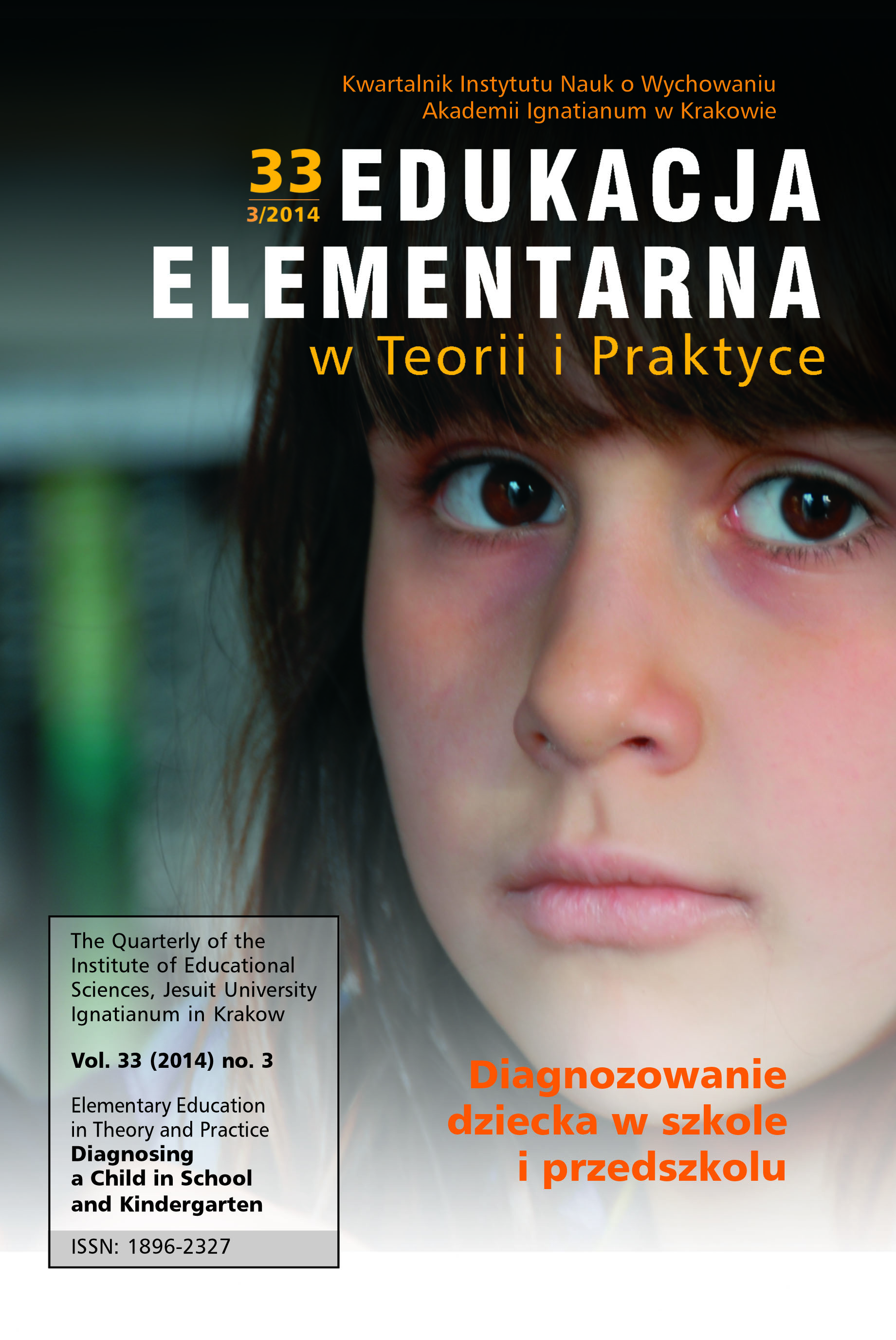Szkolny system holistycznej diagnozy dziecka w Niepublicznej Szkole Podstawowej im. Alberta Einsteina w Lublinie
The School System of Holistic Diagnosis of Children at the Albert Einstein Private Primary School in Lublin
Author(s): Małgorzata KowalczykSubject(s): Social Sciences, Education, Essay|Book Review |Scientific Life, Societal Essay
Published by: Uniwersytet Ignatianum w Krakowie
Keywords: child diagnosis; holistic diagnosis; diagnostic system; diagnostic tools; child development; individualization; stimulating of development
Summary/Abstract: This article gives a detailed description of the diagnostic procedure to which every child attending the Albert Einstein Private Primary School in Lublin is subjected. The diagnosis of a child is seen as a system of interrelated elements, reflecting the principles and rules of the diagnostic procedure. The central element of the system is the child who happens to be the object of investigation by the teacher, parents and professionals involved, all of whom are in constant interaction with one another. The text describes the precepts underpinning the holistic system of diagnosis of younger pupils. It involves a comprehensive diagnosis in all spheres of pupil development, along with an examination of the child’s abilities and interests, a monitoring of their educational progress and an investigation of any environmental genetic and biological factors influencing their development. The first step towards a holistic diagnosis of the child is preliminary exploration. At this stage, the teacher, parents and professionals work together to produce a preliminary diagnosis of the child’s development-related opportunities and abilities. This stage of activity includes observation of the child (during diagnostic sessions, educational classes and free play), evaluation of the child’s achievements to date, risk assessment as regards developmental dyslexia, explorations of creativity, evaluation of the abilities and interests of the child, and consultations and interviews with the parents aimed at getting to know the social and educational situation of the child within the family and at diagnosing parental attitudes. All these activities are used to determine the specific goals of work that will be individually tailored to both the child and their parents. The result is an individual work plan and an optimal adjustment of the offer of the school to the needs of each student. This stage thus leads one to undertake specific actions aimed at promoting the comprehensive development of the student. The next step in diagnosis is enrichment of knowledge about the child. This corresponds to a period of intense stimulation of the pupil’s development, through the implementation of the tasks included in the individual plan of work with the child. Changes in the child are continuously monitored and documented. An important diagnostic tool is the student’s portfolio, in which the child collects the results of their creative activities, and which serves as a valuable source of knowledge about the child for all those engaged in executing the diagnosis. The final stage of diagnosis is the evaluation of pupil’s results. This is when an in-depth analysis of changes that have occurred in the child over three years of elementary education is produced. At this stage, any action taken to stimulate the development of the pupil should be subjected to detailed analysis and evaluation.
Journal: Edukacja Elementarna w Teorii i Praktyce
- Issue Year: 9/2014
- Issue No: 3 (33)
- Page Range: 221-238
- Page Count: 18
- Language: Polish

